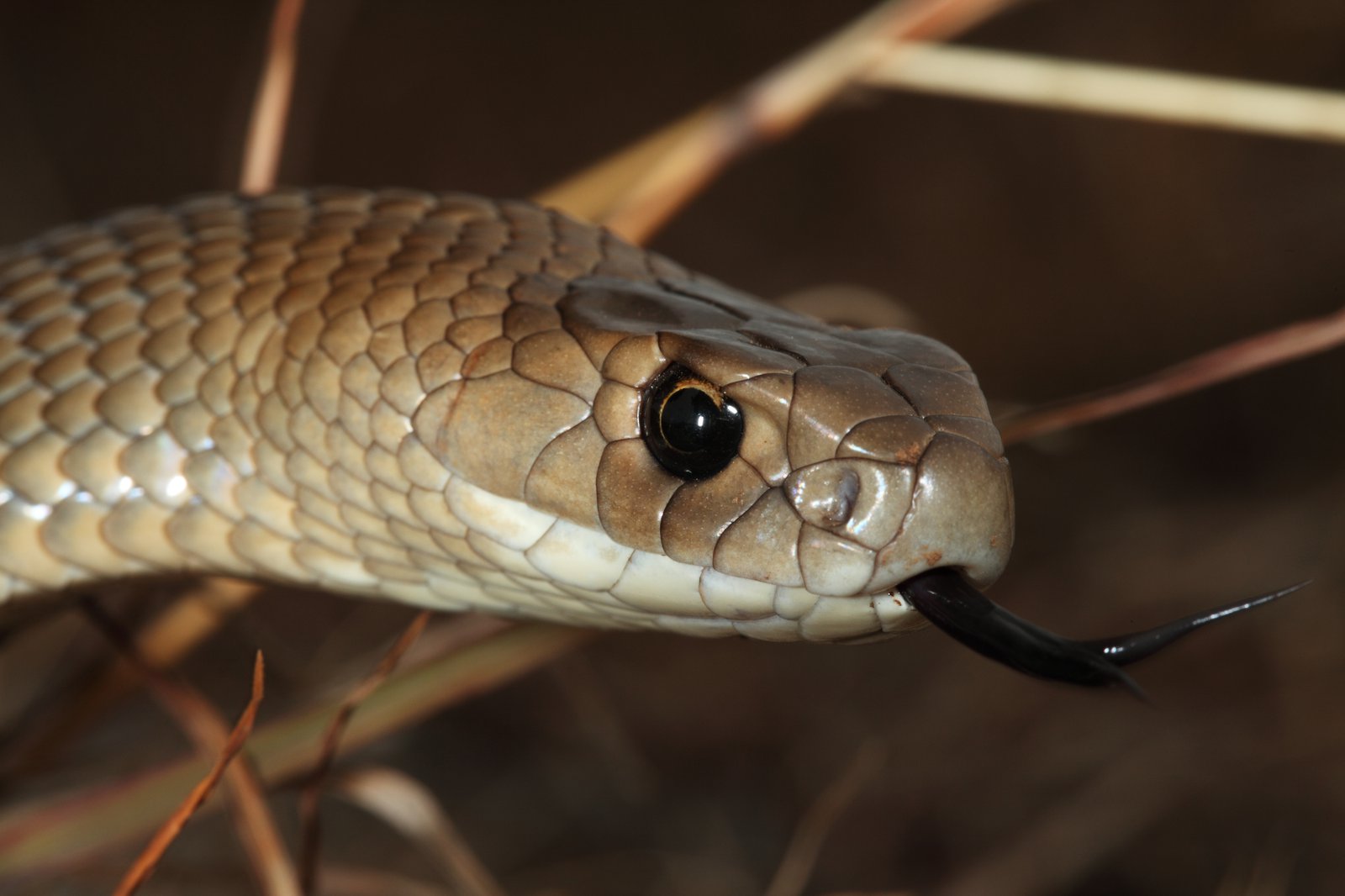
The Eastern Brown Snake (Pseudonaja textilis) is widely regarded as one of the deadliest and most venomous snakes in the world. Found in various habitats throughout Australia, this species is known for its incredible adaptability and impressive hunting skills. Despite its fearsome reputation, the Eastern Brown Snake also holds a fascinating array of captivating facts that highlight its unique characteristics and remarkable behavior.
In this article, we will explore 17 intriguing facts about the Eastern Brown Snake, shedding light on its venomous nature, survival strategies, and more. Whether you have a keen interest in reptiles or are simply curious about the wonders of the animal kingdom, these facts will leave you amazed by the incredible world of the Eastern Brown Snake.
Key Takeaways:
- The Eastern Brown Snake is a deadly yet fascinating creature found in Australia, known for its venomous bite and impressive speed and agility. It’s a versatile predator that plays a crucial role in its ecosystem.
- Despite its fearsome reputation, the Eastern Brown Snake is a shy diurnal species that prefers to avoid confrontations with humans. Conservation efforts are important to protect this snake and maintain ecological balance.
Size and Appearance
The Eastern Brown Snake can grow up to 2 meters in length, making it one of the largest venomous snakes in Australia. It typically has a slender body with varying shades of brown, ranging from light to dark tones. The sleek scales and elongated head are distinctive features of this snake.
Venomous Bite
The Eastern Brown Snake possesses potent venom that contains neurotoxins and blood coagulants. Its bite can cause paralysis, internal bleeding, and can be potentially fatal if left untreated.
Speed and Agility
This snake is known for its remarkable speed and agility. It can move swiftly, making quick strikes at its prey or when threatened. Its ability to climb trees and swim makes it a versatile predator.
Feeding Habits
The Eastern Brown Snake primarily preys on small mammals, including mice, rats, and birds. It is an opportunistic feeder and can also consume other snakes and reptiles.
Defensive Behavior
When threatened, the Eastern Brown Snake raises its neck and flattens its body, displaying defensive behavior known as “hooding.” It may also hiss loudly to intimidate potential predators.
Distribution
The Eastern Brown Snake is found throughout eastern and central Australia, including coastal regions, grasslands, and woodlands. It is considered one of the most widespread venomous snakes in the country.
Mating and Reproduction
During the breeding season, male Eastern Brown Snakes engage in combat to win the opportunity to mate with females. The females lay eggs, which hatch after an incubation period of around two months.
The King of Snakes
The Eastern Brown Snake has earned the nickname “The King of Snakes” due to its high venom yield and its ability to adapt to various habitats, making it a formidable predator in its ecosystem.
Costly Antivenom
Antivenom for Eastern Brown Snake bites can be expensive and often requires multiple vials for effective treatment. This, combined with the immediate medical attention required, highlights the importance of avoiding encounters with this snake.
Quarrelsome Nature
Eastern Brown Snakes are known for their quarrelsome behavior, even among their own species. It’s not uncommon to find them engaged in territorial disputes or combat over resources.
Longevity
On average, the Eastern Brown Snake has a lifespan of around 10-15 years in the wild. However, some individuals have been known to live up to 20 years.
Diurnal Species
The Eastern Brown Snake is primarily active during the day (diurnal) and is often seen basking in the sun to regulate its body temperature.
Threats and Conservation
Habitat loss, road mortality, and deliberate killings by humans pose significant threats to the Eastern Brown Snake population. Conservation efforts focus on educating the public about the importance of these snakes for ecological balance.
Cultural Symbolism
Snakes, including the Eastern Brown Snake, hold cultural significance in Australian Aboriginal communities, symbolizing strength, transformation, and the cycle of life.
Myth and Misconceptions
There are many misconceptions surrounding the Eastern Brown Snake, including the belief that it is aggressive towards humans. In reality, it tends to be shy and will generally avoid confrontations if possible.
Morphological Variations
The Eastern Brown Snake exhibits various morphological variations, including differences in pattern, coloration, and scale arrangement. This diversity adds to the complexity and intrigue of this species.
Research and Scientific Interest
Due to its venomous nature and impact on human health, the Eastern Brown Snake has been extensively researched by scientists, contributing to a better understanding of snake venom and the development of antivenom.
In conclusion, the Eastern Brown Snake is a captivating creature that commands both fear and admiration. With its impressive characteristics and enigmatic presence, it continues to be a subject of study and appreciation for those curious about the wonders of the animal kingdom.
Conclusion
The Eastern Brown Snake is undoubtedly a fascinating creature with a range of captivating qualities. From its potent venom and impressive speed to its unique hunting techniques and widespread distribution, this snake is both awe-inspiring and formidable. Its vital role in the ecosystem cannot be overstated, as it helps control populations of rodents and other small creatures. However, it is essential to remember that while these snakes may be intriguing, they should be respected and admired from a safe distance. With proper knowledge and understanding, we can appreciate the remarkable nature of the Eastern Brown Snake and coexist harmoniously with this remarkable species.
FAQs
Q: Are Eastern Brown Snakes aggressive?
A: Eastern Brown Snakes can exhibit aggressiveness if they feel threatened or cornered. It is advised to give them a wide berth and not provoke them.
Q: What should I do if I encounter an Eastern Brown Snake?
A: The best course of action is to calmly and slowly back away from the snake. Do not attempt to handle or provoke it in any way. Seek assistance from a professional snake catcher if necessary.
Q: Are Eastern Brown Snakes venomous?
A: Yes, Eastern Brown Snakes are highly venomous. Their venom contains neurotoxins and coagulants that can cause significant harm to humans and animals if bitten.
Q: How fast can Eastern Brown Snakes move?
A: Eastern Brown Snakes are known for their speed and agility. They can move at an astonishing speed of up to 20 kilometers per hour when they feel threatened or are in pursuit of prey.
Q: Where can Eastern Brown Snakes be found?
A: Eastern Brown Snakes are native to Australia and can be found in a wide range of habitats, including woodlands, grasslands, farmlands, and even urban areas.
Q: How long do Eastern Brown Snakes live?
A: Eastern Brown Snakes have an average lifespan of around 10 to 15 years in the wild. However, some individuals have been known to live for more than 20 years.
Was this page helpful?
Our commitment to delivering trustworthy and engaging content is at the heart of what we do. Each fact on our site is contributed by real users like you, bringing a wealth of diverse insights and information. To ensure the highest standards of accuracy and reliability, our dedicated editors meticulously review each submission. This process guarantees that the facts we share are not only fascinating but also credible. Trust in our commitment to quality and authenticity as you explore and learn with us.


